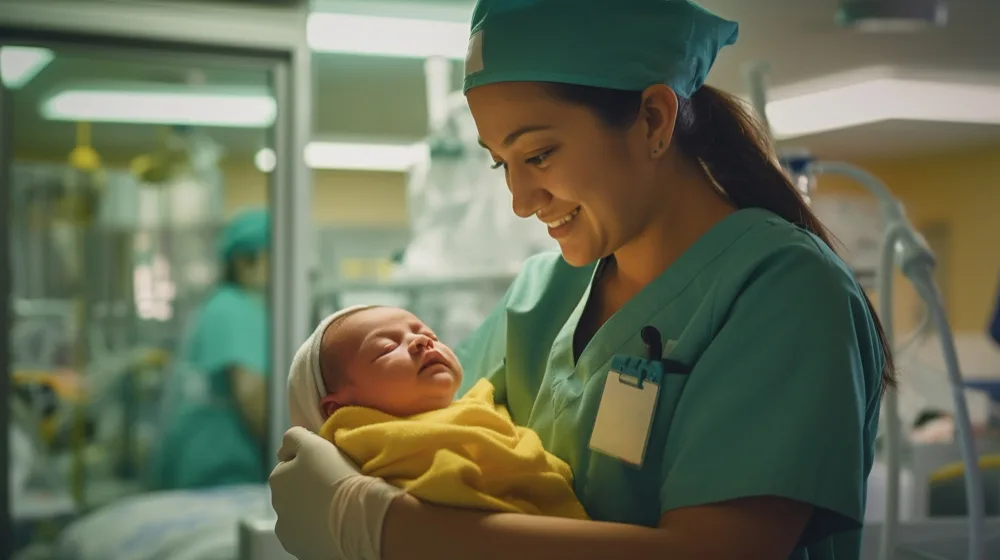Gastroshiza is a condition where a baby is born with the intestines outside of the body due to a hole in the abdominal wall. For decades, the focus of treatment has been on safe surgical repair and protecting the infant’s fragile digestive system. By 2025, however, important progress has been made in how doctors manage, repair, and support babies born with this condition. These changes are creating safer recoveries, shorter hospital stays, and more positive outcomes for families.
What “advancements” mean in gastroshiza care
Progress in gastroshiza treatment isn’t about one single breakthrough. Instead, it’s a combination of better surgical tools, smarter neonatal care, and improved feeding strategies. Every small improvement adds up, helping babies recover faster and giving parents more confidence during a stressful time.
Surgical advances: gentler and more effective approaches
Preformed silos and staged repair
One of the biggest improvements has been the use of preformed silos. These are special protective coverings placed over the exposed intestines right after birth. Instead of rushing the intestines back into the abdomen, the silo allows doctors to gradually return them, reducing stress on the baby’s body. This approach has been refined to shorten the time needed and make recovery smoother.
Sutureless and bedside techniques
Some babies are now treated with “sutureless closure” methods. Instead of traditional stitches, the abdominal wall is allowed to close naturally with the help of medical dressings. This often leaves smaller scars and avoids the risks of longer surgeries. In selected cases, bedside procedures can replace a trip to the operating room, making the process safer for fragile newborns.
Minimally invasive surgery
Advances in neonatal surgical instruments have made minimally invasive approaches more realistic. While not suitable for every case, minimally invasive repair can reduce pain, speed up healing, and lower the risks linked to large incisions. Surgeons are becoming more skilled at using these techniques, opening new possibilities for the future.
Prenatal planning: preparing before birth
One of the most important changes in recent years is how much can be done before the baby is even born. Modern prenatal imaging helps doctors spot gastroshiza early and plan for delivery in hospitals equipped with neonatal intensive care units and pediatric surgeons. This level of preparation ensures the baby receives immediate specialized care right after birth.
There is also ongoing discussion about the timing of delivery. Instead of automatically scheduling early deliveries, doctors now focus on bringing babies as close to full term as possible, unless there are urgent medical reasons. A more natural delivery timeline often improves outcomes and reduces complications.
Advances in neonatal intensive care
After surgery, the real work begins in the neonatal intensive care unit (NICU). Care in the NICU has greatly improved in recent years, with better methods for protecting the baby’s intestines and supporting nutrition.
Feeding pathways
Feeding is one of the biggest challenges for babies with gastroshiza. Today, many hospitals use standardized feeding pathways—step-by-step plans designed to introduce milk safely and quickly. These pathways help babies transition to full oral feeds faster, reduce dependence on intravenous nutrition, and lower the risk of infections.
Smarter overall care
Alongside feeding, other aspects of NICU care have also improved. Doctors now use more precise pain management strategies, carefully monitor fluids, and reduce unnecessary antibiotic use. These changes may sound small, but together they significantly improve recovery and comfort for babies.
Outcomes: how families benefit
Thanks to these advances, babies with gastroshiza are recovering more quickly than in the past. Many spend less time on ventilators, need fewer invasive procedures, and can go home sooner. While each baby’s outcome still depends on whether the condition is simple or more complex, the overall trend is toward better survival rates and healthier long-term growth.
For parents, this progress means less uncertainty, more consistent care, and a clearer roadmap from birth to recovery. Families often feel more supported when they know what to expect and when they see their baby improving day by day.
What parents should know in 2025
- Delivery location matters. Whenever possible, choose a hospital with both a NICU and pediatric surgeons available.
- Treatment plans are personalized. Some babies will have a quick surgical repair, while others may need gradual reduction using a silo. Ask your care team about the best option for your baby.
- Feeding is a key milestone. Standard feeding pathways are making a big difference, helping babies rely less on IV nutrition and transition to bottle or breastfeeding sooner.
- Fetal surgery is not routine. Although research continues, in-utero repair for gastroshiza remains experimental and is not part of standard care.
What’s next in gastroshiza care
The future of gastroshiza treatment will likely focus on refining what already works rather than chasing dramatic breakthroughs. Expect continued improvements in feeding strategies, safer staged repairs, selective use of minimally invasive surgery, and ongoing research into prenatal approaches. The overall goal is the same: to make recovery quicker, safer, and less stressful for both babies and parents.
Final thoughts
By 2025, gastroshiza treatment has become more reliable and family-centered than ever before. From improved surgical methods to smarter NICU care, today’s babies have better chances for recovery and healthy growth. For parents, understanding the latest options and asking the right questions can make this journey less overwhelming. With continued advancements, the future of gastroshiza care looks more hopeful every year


